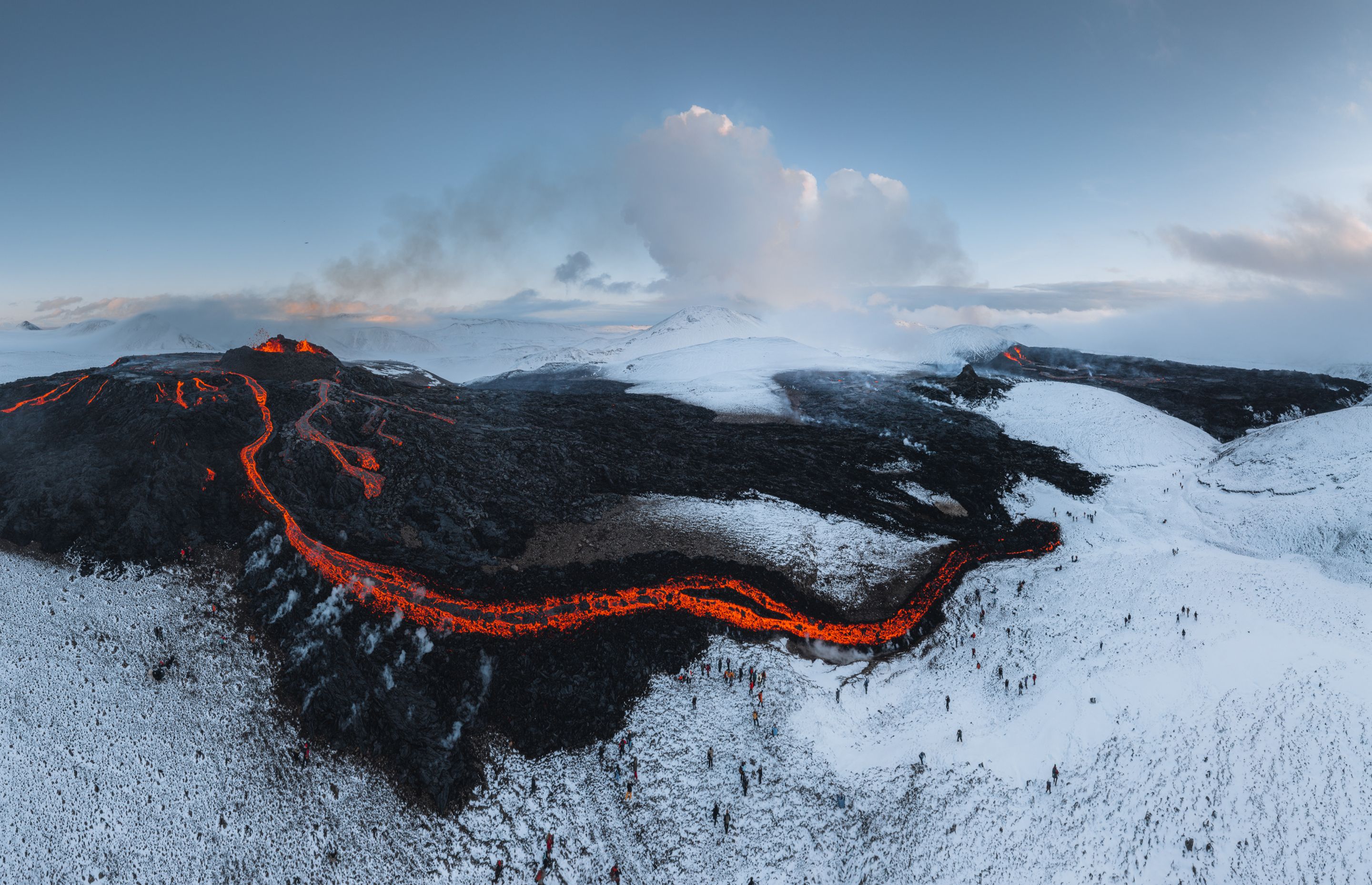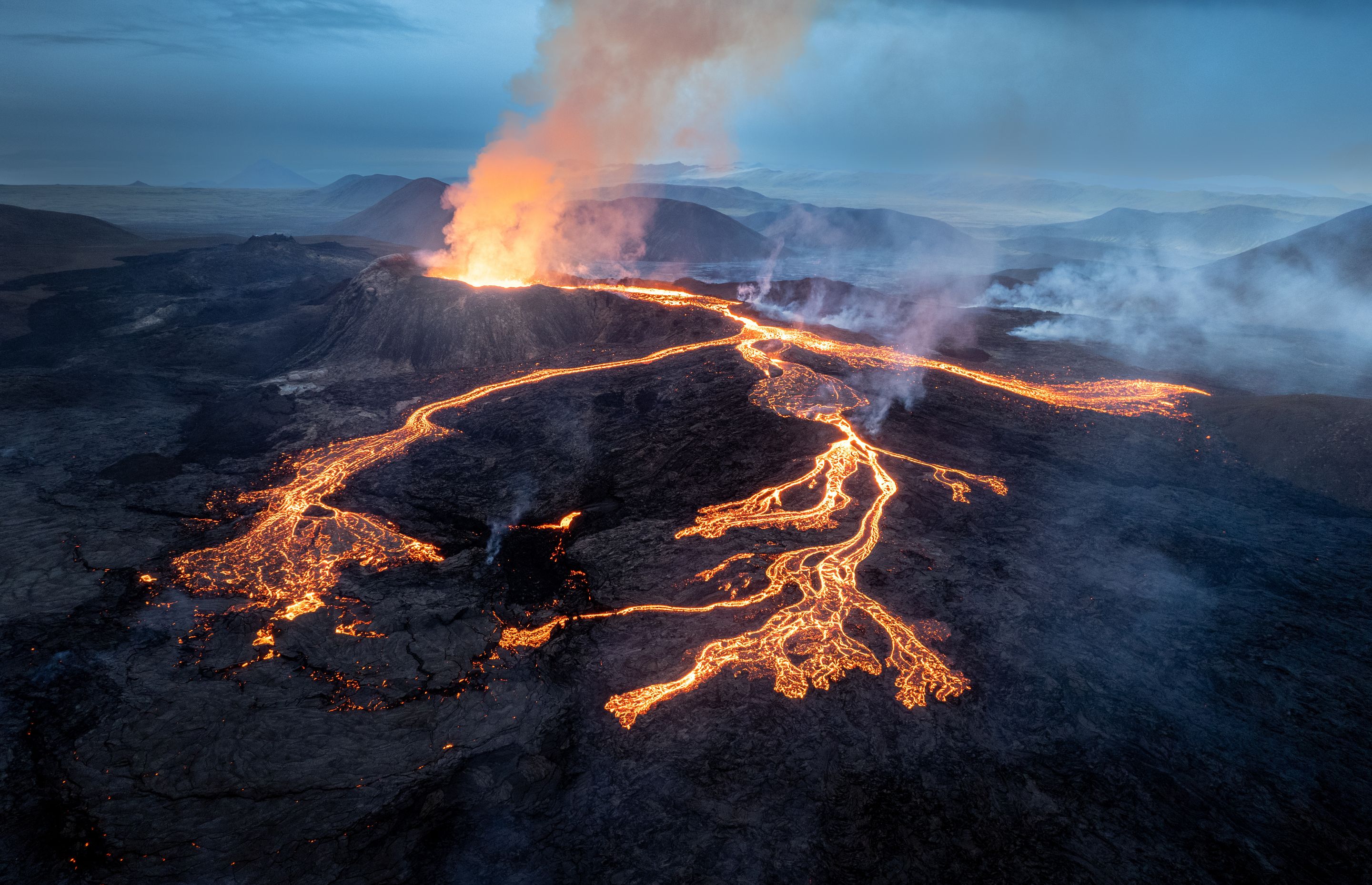
Iceland's November 2024 Volcano Eruption: Is it Safe to Visit The Island?
Jump to chapter
On November 20, 2024, a volcano on Iceland’s Reykjanes Peninsula erupted again, making it the tenth eruption in just three years. Lava fountains and thick smoke filled the air, but the good news is that no one got hurt, and life in most of Iceland carried on as usual. Flights weren’t canceled, and the major roads and towns stayed open, which shows how well-prepared Iceland is for these kinds of things.
(All photos, including the main one, were taken by Vilhem.)
Overview of the Eruption
The eruption started at 11:14 p.m. when a 3-kilometer-long fissure opened up on the Reykjanes Peninsula. This area has seen a lot of volcanic activity lately—this was the seventh eruption there since December 2023. Lava started flowing toward the Blue Lagoon, one of Iceland’s most popular spots for visitors. The lava damaged a service building, part of the parking lot, and even a pipeline that brings hot water to nearby areas.
Around 50 homes had to be evacuated, and everyone at the Blue Lagoon was asked to leave. Grindavik, a nearby town, also felt the impact, with residents monitoring air quality and lava movement. Despite all this, Iceland’s quick response meant there weren’t any major issues, and most places were unaffected.

Photo Credit: Vilhem
Is It Safe to Travel to Iceland Now?
Absolutely. Iceland is still a safe place to visit. Keflavik International Airport is open, and the capital, Reykjavik, wasn’t affected by the eruption. The Blue Lagoon had to close temporarily but is set to reopen on November 29. Until then, all the other great places to see in Iceland, like the Golden Circle or the South Coast, are totally fine to visit.
If you’re traveling soon, check updates from Iceland’s Meteorological Office and avoid heading toward the eruption zone. Lava flows and gas emissions are no joke, but the affected area is small, and the rest of the country is running normally.
Can I See the Volcanic Eruption Up Close?
Right now, visiting the eruption site isn’t a good idea. Authorities have closed off the area to keep everyone safe, since there are risks from lava flows, falling rocks, and toxic gases. Even though the eruption might sound like an incredible thing to witness in person, it’s not worth putting yourself at risk.
That said, Iceland often allows safe access to eruption sites once they stabilize. In the past, some eruptions have even turned into temporary tourist attractions with proper safety measures in place. For now, though, your best bet is to enjoy updates through photos and videos from experts and locals who are monitoring it closely.

Photo credit: Vilhem
When Will the Eruption Stop & Can It Happen Again?
Nobody knows for sure when this eruption will end—it could stop in a few days or last a few weeks. Scientists are watching closely and will update you as things change.
Experts think it will probably happen again. The Reykjanes Peninsula is in a really active period right now, and more eruptions are likely in the coming years. It sounds intense, but Iceland’s monitoring systems and emergency teams are ready to handle it.
Final Thoughts
Even with the lava and smoke, Iceland is still doing what it does best: being an incredible place to visit. The Blue Lagoon and parts of Grindavik might be off-limits for now, but there’s so much more to see and do. Iceland’s used to this kind of thing, and life keeps rolling on. So, if you’re considering visiting, don’t stress—you’re still in for an amazing trip.


